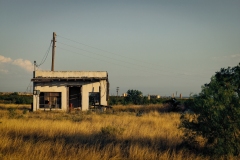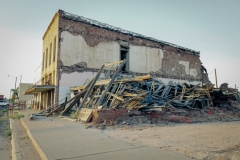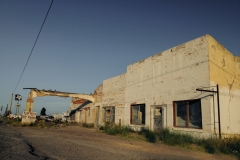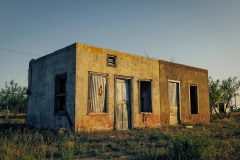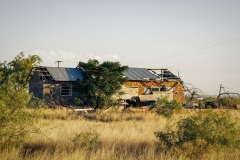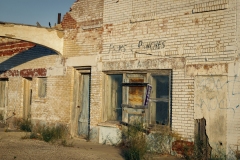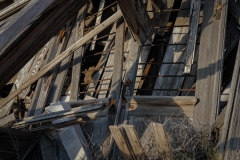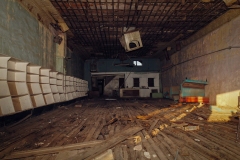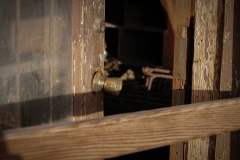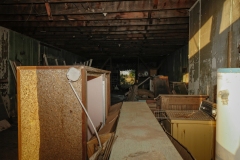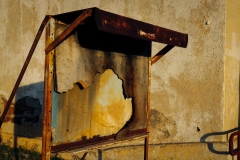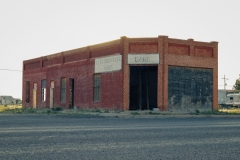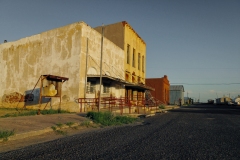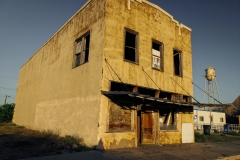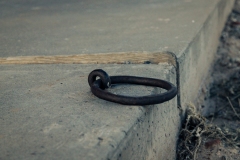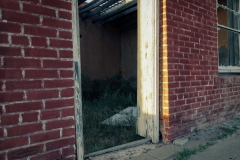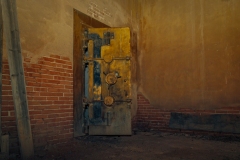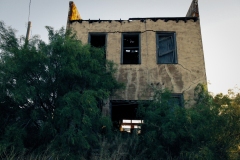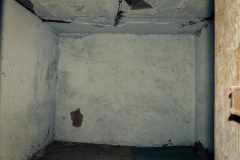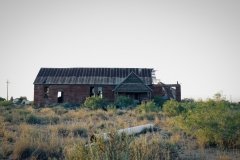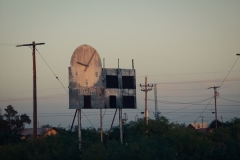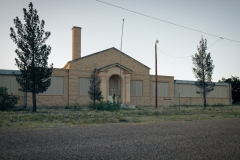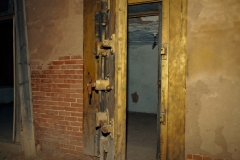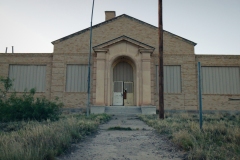Barstow is a living ghost town and carries on an important part of West Texas History. The small settlement of approximately 20 families became a town and county seat when the Texas and Pacific Railway first came through in 1892, and George E. Barstow promoted the sale of land irrigated by the Pecos River. Initial buildings to open in the same year included a store, lumberyard, courthouse, and school. A general store, additional lumberyard, hotel, and sanitarium just four years later. Population boomed to over 1,500 by 1903. The next few years would see additions of a Baptist church, The Citizens Bank, telephone lines, and an electric power plant.
Growth of grapes, alfalfa, and cotton were strong in this area. In fact, bronze and silver medals were awarded to Barstownians George E. Briggs and Barstow Irrigation Co. (respectively) for grapes at the St. Louis International Exposition in 1904.
An early morning fire almost took Barstow’s business section in 1908. Residents reacted quickly to sirens and aided in saving all but 4, the Barstow Irrigation Company’s offices, Barstow Furniture Co., Model Meat Market, and Boxely & McCollough dry goods store.
Despite its economy and community, population was cut in half by 1918 after floods and droughts ceased farming. According to a 1974 article by The Pecos Enterprise, the agricultural situation was mainly due to New Mexico dams cutting off water supply to the Pecos River. It also increased the salinity, or saltiness of the river water. The same leftover acreage was maintained through the end of the century; however, only about 14,000 was irrigated by the 1930’s.
Barstow always worked hard to provide an education. The first school from 1891 was outgrown and replaced with a 2-story brick building in 1916. This building was condemned in 1938, although parts would remain in use until 1953. Another was built in 1938 and largely destroyed by fire in 1945. Classes were held at various places within the town for 2 years until the last was constructed alongside the previous school’s gymnasium. Barstow and Pecos school districts combined to provide greater benefits to both areas and held the first 6 grades in Barstow and the remaining in Pecos. A very unique reporting was made in a 1973 edition of Pecos Enterprise when 5 sets of twins were included in just 121 students in Barstow. While this was four times greater than typical odds, they were all in grades 4th through 6th. The Pecos-Barstow-Toyah Independent School District now has all schools in Pecos.
Many county seats in Texas seem to be moved due to resources and growth being pulled from one area to another. In this case, an oil boom in Monahans became the new growth area. Naturally, citizens voted in 1937 to become to the new county seat. After some bitter fighting, Barstow lost its position held for 46 years. Many stories circulated about armed deputies from Monahans militantly removing records and being met by armed Barstow citizens. Some were tame and others explored many news-worthy acts rarely seen outside of fictional stories.
Today’s Barstow is a much different place. The main street is wide and gives the initial appearance of what could be a great place. It doesn’t take long to see there isn’t much left. Some buildings have been removed and a couple are still used. However, many stand as shells with memories of a hundred years ago. These include the Citizens State Bank, Masonic Lodge, and Modeni’s Food Market. Catholic and First Baptist churches still active, unlike the First Presbyterian church, which has sat vacant for years.
Today, streets contain a mixture of lived-in and long abandoned houses as neighbors. Dogs roam trash-lined roads. The barely recognizable original schoolhouse sits in the middle of large, overgrown field, show late stages of decay. The bell tower and eves were removed a long time ago and its structure has held on thanks to a corrugated iron roof added many years back. The last active school is quite large and externally looks to be sound, although the inside shows no signs of use in a very long time. All windows are covered in metal, which has kept vandals at bay. It sits on acres of unused land with a barely recognizable scoreboard overlooking where kids once played sports.
There is certainly still a community, with 349 residents calling Barstow home. No boom or nearby city expansions promise a rejuvenation from people looking to relocate. In fact, their only boom was the town’s inception.

